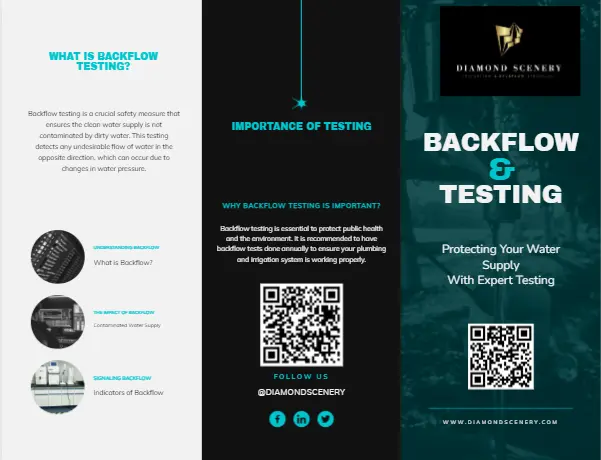How Often Should You Perform Backflow Testing for Your Water Supply?
Backflow testing is an essential procedure to ensure the safety and integrity of your water supply. Inadequate backflow prevention can lead to contamination, which poses health risks. But how frequently should you schedule backflow testing? This guide will explore the recommended frequency for backflow testing and why it’s crucial for maintaining your water system, especially in landscape maintenance.
What Is Backflow and Why Is Testing Necessary?
Backflow occurs when water flows in reverse, potentially introducing contaminants into the clean water supply. Such reversals can occur due to changes in water pressure, like a burst pipe or heavy demand on the main water line. This can lead to health hazards as pollutants and bacteria can infiltrate your potable water. Therefore, conducting regular backflow testing ensures that your prevention devices are operating correctly, keeping your water safe.
In systems without backflow testing, there's a risk of water contaminated with chemicals or waste infiltrating clean water supplies. For example, backflow can carry fertilizers or pesticides from your garden into your drinking water. This highlights why municipalities often mandate regular backflow testing as a public safety measure.
Backflow testing involves the inspection and maintenance of backflow devices. These tests can identify any failures or inefficiencies in preventing contaminants from merging with your drinking water. Certified professionals perform these evaluations to ensure that all components function according to specification, safeguarding community health.
General Guidelines for Backflow Testing Frequency
A widely accepted guideline for backflow testing frequency is annually, as this helps ensure that your prevention devices are functioning efficiently. However, adjustments might be necessary based on your local conditions and specific risk factors. Testing intervals can be influenced by the age of your system, the condition of your water lines, and other environmental factors.
In some cases, like areas with a higher risk of contamination or older infrastructure, more frequent testing may be recommended. The expectation is to prevent backflow incidents before they occur by catching potential problems early through regular evaluations.
For properties with more complex water systems or significant usage, semi-annual testing might offer greater assurance against accidental contamination. This is especially relevant for locations with high-water usage or in industries sensitive to water purity.
Considering Local Regulations and Requirements
Local governments often establish specific regulations regarding backflow testing to protect public health. These laws mandate necessary testing frequencies and methodologies to ensure consistency and efficacy throughout the community. Failing to adhere to these regulations can lead to fines or worse, health risks to the public.
It's essential for property owners to be aware of these local requirements, as testing regulations can vary significantly from one area to another. For instance, some jurisdictions may require quarterly testing for properties connected to high-risk zones like chemical facilities or hospitals.
Consulting with local water authorities or certified inspection services can help property managers stay compliant, thereby preventing both health hazards and legal complications arising from non-compliance.
Identifying High-Risk Areas in Landscape Maintenance
Landscapes often include complex irrigation systems which can increase the risk of backflow incidents. Fertilizers and pesticides commonly used in landscape maintenance pose a significant contamination threat if they seep into your potable water supply. Hence, properties with extensive landscaping might require more rigorous backflow prevention strategies.
Areas near sewage lines or industrial zones are other examples of high-risk sites that might necessitate backflow testing more frequently than the standard annual guideline. The close proximity to potential sources of contamination increases the importance of maintaining vigilant preventative measures.
Regular inspections and evaluations of your landscape irrigation systems can help identify potential backflow risks early on, ensuring they can be addressed promptly. This proactive approach helps maintain not just the aesthetic of your landscape, but the health safety of everyone using the water supply.
Choosing Professional Backflow Testing Services
Selecting a certified professional for backflow testing is crucial for ensuring high-quality service. These experts bring extensive knowledge and experience, ensuring thorough assessments and reliable results. They are familiar with both the technical aspects and regulatory requirements of backflow prevention testing.
Professional services provide the necessary documentation required by local authorities, which serves as a record of compliance. This not only meets regulatory criteria but also assists in maintaining a history of service and any necessary maintenance actions taken.
Companies like Diamond Scenery offer comprehensive testing services that are both reliable and effective. Their certified professionals ensure your systems operate optimally, reducing the risk of backflow incidents.
Ensuring Safety Through Regular Backflow Testing
Regular backflow testing is crucial for preventing contamination and ensuring the safety of your water supply. By adhering to local regulations and considering risk factors unique to your property, you can determine an appropriate schedule for testing. Remember, proactive maintenance safeguards not just your landscape, but everyone's health.

